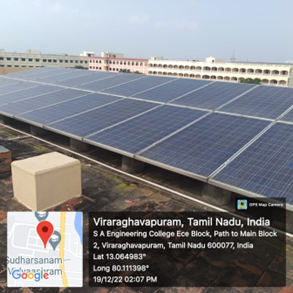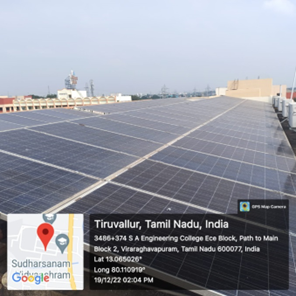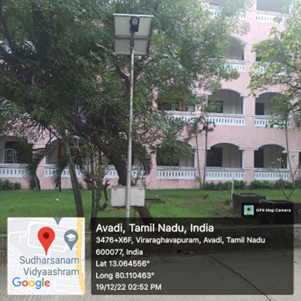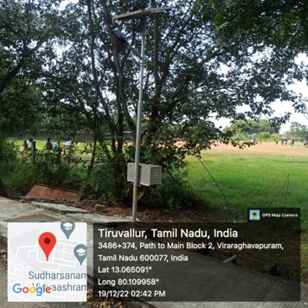Energy Conservation
Energy conservation is an important factor in mitigating climate change. The Alternative Energy sources of S.A. Engineering College are made for implementation and efficient utilization of renewable energy for non-renewable resources.
Energy conservation is frequently the most cost-effective solution to energy shortages, as well as a more environmentally friendly alternative to increased energy production. An alternative Energy source offers the opportunities for student’s community to engage in initiatives for contributing to environmental protection.
Solar Energy System
Solar energy conversion describes technologies devoted to the transformation of solar energy to other (useful) forms of energy, including electricity, fuel, and heat. It covers light-harvesting technologies including traditional semiconductor photovoltaic devices (PVs), emerging photovoltaic system.
Solar Panel Specifications: –
Solar PV System capacity CSE & EEE Block- 108.2 KW
CSE BLOCK: 20KW Solar System
Technology: Polycrystalline Photo Voltaic Module
Generation Capacity: 20 KW, 80 Modules with 250 Wattage Each.
EEE BLOCK: 88.2 KW Solar System
Technology: Polycrystalline Photo Voltaic Module
Generation Capacity: 88.2 KW, 294 Modules with 300 Wattage Each.
Inverter capacity/make- 50 KW/Delta


Sensor based Energy conservation
In SAEC Sensors are used to control Street lights which helps to do energy conservation. Sensor Based Solar Lights are installed in the college premises.
PV Sourced Street Focus Lighting Systems
A photovoltaic-sourced street lighting system is most promoted nowadays for illuminating a street or an open area of rural and urban places. This system improves the efficient utilization of energy consumption with the addition of suitable sensing and control devices. The main components of the above system are the PV panel, Battery, Sensor, DC-DC converter, power electronics Inverter, and real-time Timer. Here we prose a day-light sensor that opens the circuit electrically during the sunlight’s visible time period and closes the electrical circuit. The battery is used to store the energy obtained from the Photovoltaic array during the high sunshine time period and a suitable DC to DC converter is used for charging the energy.
Use of LED Bulb
LED lighting is very different from other lighting types such as incandescent and CFL. Key differences include:
Light Source: LEDs are the size of a fleck of pepper, and can emit light in a range of colors. A mix of red, green, and blue LEDs is sometimes used to make white light.
Direction: LEDs emit light in a specific direction, reducing the need for reflectors and diffusers that can trap light. This feature makes LEDs more efficient for many uses such as recessed downlights and task lighting. With other types of lighting, the light must be reflected to the desired direction and more than half of the light may never leave the fixture.
Heat: LEDs emit very little heat. In comparison, incandescent bulbs release 90% of their energy as heat and CFLs release about 80% of their energy as heat.
Lifetime: LED lighting products typically last much longer than other lighting types. A good quality LED bulb can last 3 to 5 times longer than a CFL and 30 times longer than an incandescent bulb.
They are used in large numbers in Admin office, reception, seminar halls and corridors. LED lights are fitted on the roof walls in all the places.


